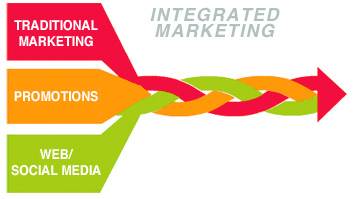Posts Tagged ‘Communication’

Integrated Marketing Communications can be defined as “a communication process that entails the planning, creation, integration and implementation of diverse forms of marketing communications that are delivered over time to a brand’s targeted customers and prospects” (Shimp, 2010, p.10). The integration of all marketing efforts is necessary, due to the fact that the core meaning of the brand need to be stressed by each individual marketing technique. The formulation of an effective brand core meaning has significant positive contribution to the growth of the business. It needs to be stressed that Integrated Marketing Communications is not just a buzzword or a management fashion. On the contrary, “Integrated Marketing Communications is not a fleeting but rather has become a permanent feature of the marketing communications landscape around the world” (Shimp, 2010, p.9). References Shimp, T.A. (2010) “Advertising, promotion, and other aspects of integrated marketing communications” Cengage Learning

Cooks (2008) defines social media as the types of software tools used by individuals in order to consume, convey, create and share content such as blogs, social networking, wikis etc. The literature review revealed a consensus among authors on the idea that during the last decade social media has evolved as an efficient means of communication for business and private purposes. Moreover, Morley and Parker (2010) observe increasing level of addiction to social media among individuals in general, and younger people in particular. Specific characteristics of social media as a communication tools include peripheral traits, facilitation of many-to-many communication, high level of transparency, and many potentials for the disruption of communication. It has been stated that “one of the benefits of using social media services as a communication interface is that a lot of people are already there; they know how to use the features and perhaps the threshold for participating in interaction with others is lower” (Zavoral, 2010, p.413). Additional benefits of using social media as a communication channel in workplaces have been found to include inexpensive or no associated costs (Ruesch and Bateson, 2008), ease of use (Thayer, 2009), possibility to limit visibility whenever necessary (Guffey et al., 2009), and social media serving as a content-sharing medium (Bronstein et al., 2010). According to Bronstein et al. (2010) the use of social media by businesses in general and large multinational corporations in particular is not limited to the facilitation of communication. Rather, social media in its various forms such as company Facebook page or YouTube clip is being valued by increasing numbers of businesses at a strategic level. Moreover, according to Eunson (2012) the introduction of a wide range of innovative social media sites and new platforms for online communication did little to compromise the role of traditional e-mails…
